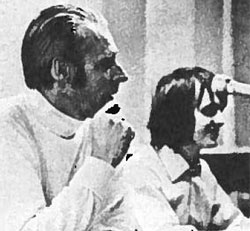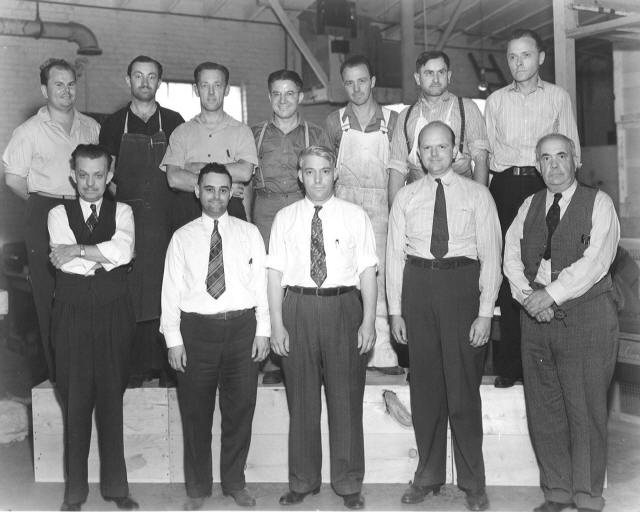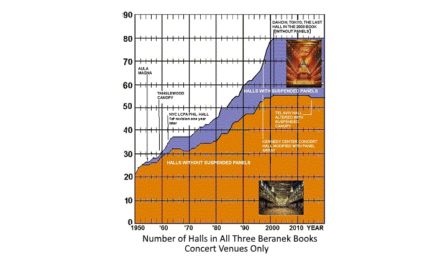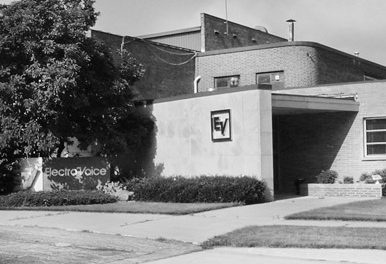WW: Is it true that Sgt. Pepper was recorded on four-track machines?
GM: Yes, absolutely true. It was done four to four.
WW: Who did the engineering on Sgt. Pepper?
GM: Geoff Emerick, I think he did all of it.
WW: What other Beatles records has he worked on?
GM: I couldn’t give you a catalog — there are quite a few. When we started out, the engineer we had was a guy by the name of Norman Smith. I can’t give you which record he stopped on, but we could find that out easily the facts arc there.
But he came to me one day and said he wanted to be a producer… he was an EMI engineer. . . and did I mind. And I said, “No, fine. Off you go.” He said, “The only thing is, I want to go on engineering the Beatles.” And I said, “Well, now, I don’t think you can do that.” I was very firm, but quite polite, and I said, “If you want to be a producer, that’s one thing and that’s fine. Go and make some good records. I’m sure you can, but I don’t think you can go on engineering at the same time,” which comes back to your previous question.
So he made the plunge and he left and became a producer, and he’s done some extremely good stuff. He made all of the Pink Floyd’s early records. He’s now a staff producer for EMI. But then I had to find another engineer.
Now there were lots of engineers senior to him at EMI, but I decided at that time that I wanted someone very new and young. I’d been looking around—looking for talent, so to speak, and I decided to give the chance to Geoff Emerick, who in fact had done very little recording before. He’d been balancing for six or nine months before I gave him the job with the Beatles. He jumped at that and it was really tossing him over the deep end; but he was marvelous — he came out with colors flying. And after Geoff we used other people as well, but in fact, we brought Geoff back for Abbey Road.
WW: He didn’t, then, work on the Beatles white album?
GM: No, he didn’t.
WW: Would you describe some of the techniques used on Sgt. Pepper, for example on “For The Benefit of Mister Kite”?
GM: That’s really quite simple when you know about it. John wanted a calliope kind of sound. He wanted to get the impression of a fair ground and he played me this song that he’d written, and asked what I could think up to give it that kind of fair ground atmosphere.
And I thought a lot about it, and I decided the best way to do it was to use some of the techniques I’d done with spoken word records. I decided that to get the kind of swooping, steam organ noise he wanted, I got him on one Hammond organ and me on another; actually I think he was on a Lowry and I was on a Hammond.
And we recorded some half speed organ, and I did some chromatic runs with the tremelo on fairly fast over two octaves and then sped them up to double speed. That was one of the things — the swooping noises. But for the background mush, I got lots of steam organ tapes, genuine fair ground organ recordings of all sorts of pieces of music — “Stars and Stripes Forever” and those kinds of things — and cut them into short lengths (of tape) and threw them up in the air, literally, and just told the engineer to pick them up again and join them all together. He thought I was mad.
We played it and of course the result was very cacaphonic. We used that as just a general background, mingling mush, which gave the required effect … all kinds of funny jumping — some of it was backwards — but it worked.
WW: Beatles records are also characterized by constructive use of echo effects. Do you pay particular attention to echo on your recordings?
GM: The right kind of echo, yes. There’s a tendency these days to use plates an awful lot, in fact exclusively. We have plates here but we also have an echo chamber, which I must confess I haven’t used a great deal yet. But I believe that a good chamber can beat a plate any day. I used chamber mainly on Beatles records.
Actually, we used a combination of chamber and tape, which we called “steed” — I don’t know why we called it “steed” — but it was basically sending the delayed signal by means of tape into the chamber.
WW: Why weren’t any of the engineering teams credited until Abbey Road?
GM: EMI policy, and they didn’t like it even then. (Abbey Road)
WW: Beatles records, especially since Sgt. Pepper, have caused a rekindling of interest in the electric bass. Was bass a particular problem in recording the Beatles?
GM: Paul was always worrying me to get more bass on the records, certainly, and it was my job to try and get that bass on, true. Probably it was the single most worrying factor, of any sound that we produced, because Paul is a perfectionist and even when we got a great bass sound he didn’t think it was very good. Now, you say that we got some great bass sounds, which is nice to know. I’d like you to relay that information to Paul.
WW: I’d be glad to.
WW: Could you describe a technique you used on the bass on Abbey Road, say, for example, “Come Together”?
GM: I think on that particular one we used a combination of direct injection and live sound.
WW: And limiting/compression?
GM: Yes, of course, and also a little bit of echo too. But each sound is treated on its own merits. That’s why we, in fact, got lots of varied sounds, some of which were not so good as others.
WW: The instruments and voices on Abbey Road have a particular clarity and presence that seem to be derived from close-miking or similar techniques. Was directed it in the studio. Everything else was mine. this your aim?
GM: I was aiming for clarity, but oddly enough, it isn’t very necessarily close-mike techniques that provide this. This essence of that clarity that you talk about is the ability to differentiate one sound that is interfering with your bass, for example, then you do something about it. You change it. And I think the clarity comes from having distinguishable sounds anyway.
WW: Then from a production standpoint, if you’re going to have two sounds in the same frequency range, they should be playing approximately the same part, or else they will muddle each other?
GM: That’s right.
WW: Did you do all the horn and string arrangements for the Beatles?
WW: Yes, with one exception. Oh, I certainly didn’t do the “Let It Be” one, which Phil Specter did. I was quick to disown that. There was one exception; it was one of the string ones, which an English arrange did. He gave us the score because I wasn’t around at the time and Paul wanted it done very quickly. Mike Leander it was on one title. He gave us the score and I directed it in the studio. Everything else was mine.
WW: Do you think that you’ll work with the Beatles again, or any of he Beatles?
GM: In the answer to the first question, I think it’s possible if the Beatles ever work together again. As to the individual Beatles, I don’t know. Each one of them is very talented, two of them in particular, in fact George, John, and Paul are obviously more talented than Ringo.
All four of them are very talented anyway, but none of them is as strong as the four of them together. The four individual parts were not as great as the entire whole. The Beatles, four people together, did something that nobody else had ever done before, and the fact that they’re not together I think is a very sad thing.
Editor’s Note: This is a series of articles from Recording Engineer/Producer (RE/P) magazine, which began publishing in 1970 under the direction of Publisher/Editor Martin Gallay. After a great run, RE/P ceased publishing in the early 1990s, yet its content is still much revered in the professional audio community. RE/P also published the first issues of Live Sound International magazine as a quarterly supplement, beginning in the late 1980s, and LSI has grown to a monthly publication that continues to thrive to this day.
Take the PSW Photo Gallery Tour of audio equipment ads appearing in RE/P magazine, circa 1970.
Our sincere thanks to Mark Gander of JBL Professional for his considerable support on this archive project.




